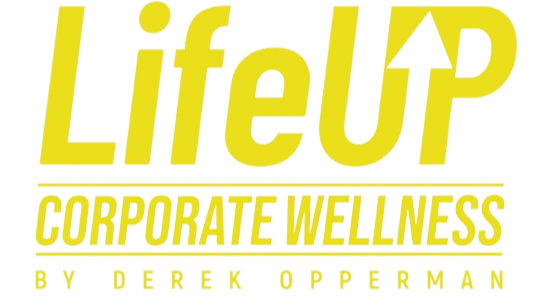
Does this sound familiar? You kick off your corporate wellness initiative with a bang. Employees are enthusiastic and affirming.
You feel heartened that your hard work getting the program off the ground is paying off. But as weeks go by, employee enthusiasm begins to wane.
Many of your people begin to lose interest in program offerings.
And before you know it, employees are dropping out, and those who are still participating do it half-heartedly.
So what can you do?
Experienced wellness providers are familiar with these setbacks. And with that in mind, they create workplace wellbeing strategies that are effective and inclusive.
Programs that inspire, motivate, and engage. Visualize having a corporate wellness coach who will help you successfully implement those strategies.
When you work together, you can anticipate far better participation rates – from beginning to end. Here are 7 strategies that will put you on the path to success:
1. Let leaders show the way
Successful programming begins at the top. Yes, it’s vital for leaders to walk the talk. When leadership and management show enthusiasm, you’ll experience far more dynamic results.
Start by establishing a Wellness Committee and getting your wellness champions to begin spreading the message.
Select committee members and champions from various departments and divisions and all levels of authority.
2. Make things easy
HR leaders tell me their people sometimes say they’re reluctant to participate in health and wellness programs for the following reasons:
- No time
- Little interest
- Not aware of offerings
- Barriers to access.
That’s why it’s vital to communicate, communicate, communicate – and do it effectively. It means going beyond posters, (though these can be effective, too).
Use every form of messaging at your disposal from letters to text messages to promote wellness initiatives, health tips, and your EAP.
Another way to make healthy choices easy for employees is to make healthy options the default, helping to maximize awareness.
Think of replacing pizza with whole-grain tortillas and nutritious fixin’s. Or replacing the candy in the vending machines with trail mix, Pirates Booty, and low-sugar energy bars.
If you’re going to hang posters, make them intriguing and fun.
For instance, two Samford students who wanted to see whether positive messaging would increase staircase usage put up posters that said “Be healthy and take the stairs.” On each step, a small sign showed the number of calories a stair climber would burn.
So post interesting health and nutrition messages in highly trafficked locations.
Think elevators, restrooms, hallways, and coffee stations. Promote messages that encourage employees to simply stretch throughout the day.
3. Get to Know Your Employees
To design and implement a flourishing wellness strategy means learning about your employees’ wants and needs.
This involves sending out employee surveys and forming small focus groups to get feedback and bring barriers to light.
This way, your program will benefit from listening, learning, and gaining targeted insights.
To achieve maximum engagement and participation, you’ll need to take key demographic information into account.
For example, you’ll want to assess any language and/or literacy barriers, whether employees have computer access at home and at work, and any job requirements and restrictions.
You’ll also want to tweak specific aspects of your health and wellness program to give employees with disabilities and health restrictions or remote employees maximum participation opportunities.
4. Brand and promote
Driving high participation and engagement in a wellness program involves four crucial components when it comes to messaging:
- Develop a wellness brand for the program
- Find your program a “home”
- Design media and materials to educate and update employees and give shout-outs for successes
- Personalize messaging
Give your program a logo and catchy name. This way, employees will easily be able to consistently recognize and utilize the program.
Once you’ve designed and developed the program, give it a “home,” such as an internal wellness portal or website where employees can easily access information.
Companies with a vibrant culture of health use technology, team meetings, wellness committees, and targeted communications that enable employees to stay connected and share information.
Use your company newsletter or email blasts to broadcast success stories and testimonials. When you recognize your health champions, other employees want to climb aboard the health train.
Lastly, your employees are more liable to pay attention to your program when they see you’re making an effort to communicate relevant information to them.
Giving them health tips and resources is one way to grab and hold their interest.
5. Keep updating
Having a great wellness program launch is important, but you’ll need to go beyond that enthusiastic kick-off event. Don’t drop the ball after the initial excitement is over.
The secret to maintaining interest and engagement is keeping things fresh. Regularly add new features that make employees excited to participate.
Survey employees to discover the health topics that they would like to cover in the program.
Use Facebook, YouTube videos, and your company web portal to capture employee interest and maintain engagement and participation.
You’ll want to keep programming fresh and fun. Hold team challenges, offer incentives for reaching goals, and include lively and entertaining initiatives.
6. Make sure there’s a payoff
Consider your company’s criteria for offering incentives. Do you want to motivate employees to participate, influence their health outcomes, or some combination of both of these?
Financial incentives can motivate employees to take part in on-site screenings, for example, or sign up for an employer-funded group health plan.
But these won’t necessarily result in long-term behavioral changes.
But if your program infuses fun, humor, respect, and community, you’ll provide employees with an emotional connection which is far more likely than an incentive to pursue the behavioral changes they require to embrace wellness.
7. Personalize things
Flourishing wellness programs feel personal. You’ll want to provide enough screening processes, resources, ideas, and educational materials that employees want to create their own individual health and wellness goals.
That way, you’ll encourage employees as they celebrate early successes and reap meaningful rewards.
These early successes will motivate employees so that they’ll want to achieve more challenging goals.
Promoting success means offering encouragement, tools, and resources, such as health and wellness coaching, fitness challenges, and meaningful rewards.
The upshot?
As a seasoned corporate wellness coach, I can attest that creating effective and inclusive wellbeing strategies will inspire, motivate, and engage your employees. And if you’d like to explore how we could create a successful program together, let’s get in touch.
To your health!



